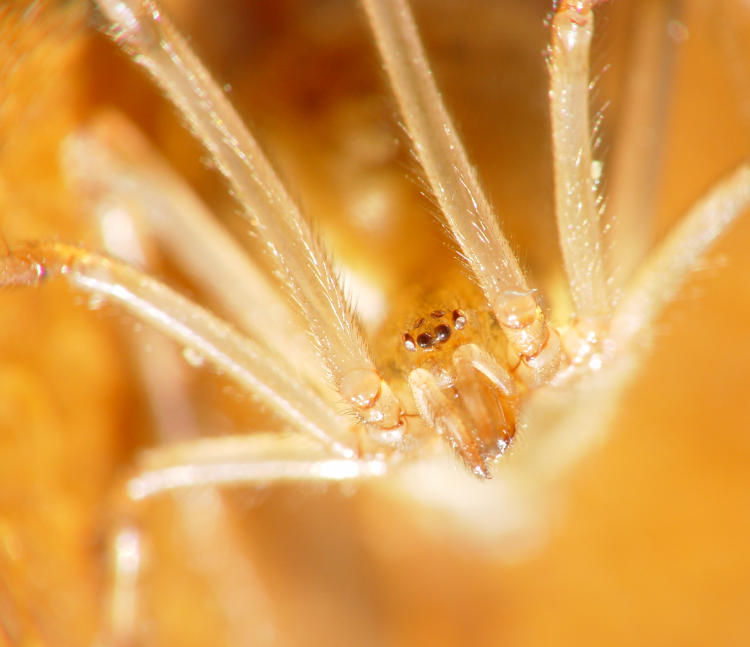
Our opening image today comes from 2003, and is only the second frame in my Arthropods folders – all seven of them (at present count.) Since I limit the folders to about 4,000 images for convenience, I’ll let you do the math, but I just started the seventh a month or so ago so don’t aim too high. But this is also the first of the extreme macro images, and was accomplished with the borrowed Sony F717 and one of the lesser-known but easier macro techniques called ‘lens-stacking:‘ mount a standard 50mm lens, backwards, onto a longer focal length, generally 200mm or better. The greater the difference, the greater the magnification. All it takes is a simple reversing ring in the filter threads of both lenses, quite inexpensive, and of course both lenses, but it’s not like it’s hard to find a 50mm around, which doesn’t need to be compatible with your current equipment in the least. The biggest issue is the distortion that will almost certainly get worse towards the edges of the frame, but not too far behind are holding still enough for the extremely precise focus distance, and getting some light onto the subject as close as it is to the lens, which may be only a few centimeters. You can tell here that the source is quite bright, too bright, and coming from the underside, a flash unit on an off-camera cord. Still, I was pleased with the detail on this cobweb spider, probably a house spider in the genus Steatoda or Parasteatoda.
I must note that this was early in my arachnid-handling days and I was still leery of handling something that I knew wasn’t dangerous, and so this one was gassed with acetone, and quite dead for the photo. Yet this also meant that I wasn’t trying to nail focus on a spider that wasn’t inclined to pose, which is a fair number of them.
Now we’ll jump a dozen years later.

This remains my favorite spider portrait, and you can see why. The ‘facial’ detail is excellent, the light in the eyes is slick, in fact the overall light quality is near-perfect from the softbox I was using at the time – the only caveat I have is that the softbox was rectangular and it shows in the eye reflections if you look closely.
Some credit goes to the species (which I believe is a crab spider Tmarus angulatus): it simply had the detail to capture and a curious, uncommon coloration. But other differences are the light quality, as noted – I’d learned how to use more diffuse and broader sources – and the bare fact that the latter was shot not just alive, but in situ atop its egg cluster, secure in a rolled-up leaf. Better framing of course, but let me note that both images are only cropped slightly – the latter had been trimmed on the long side just to eliminate wasted space, so I did the same for the first image to make them comparable, but no other edits were performed. The macro techniques were slightly different – instead of lens stacking for the second image, I used a reversed lens instead, the defunct 28-105 which had been permanently set for about f16, which provided an edge in depth.
The third image used for the ‘Visibly different, part 18‘ post split the difference between ‘staged/captive’ and ‘wild’ subjects – another spider portrait, but this one collected without restraint and slipped onto the water surface of my macro aquarium. At any point in time it could have scrambled away, but the meal it was consuming probably kept it less inclined to do so, and my unobtrusive handling method failed to alarm it. Still, I must give credit to an enormous amount of luck.
One last Visibly Different post to go for the year, and if all goes well, it’ll be a pair of ‘showoff’ images, but hopefully ones you can appreciate – not spiders, in other words. I’m actually working on them now (well, not right now, but I’m resuming as soon as I’m done writing this post,) yet I’m not sure that I’ll be finished in time given, you know, the other demands of the week. If not, they’ll appear in a bonus installment of the topic just a little later on.



















































